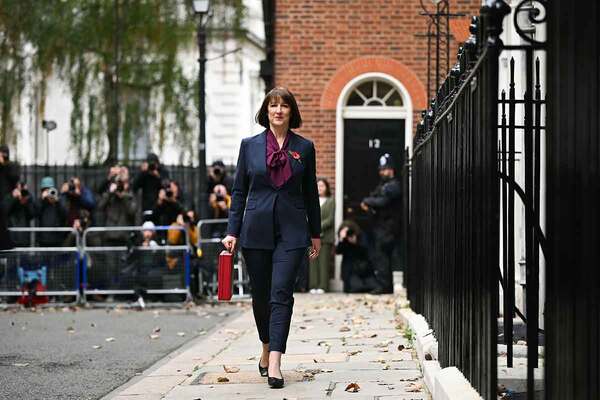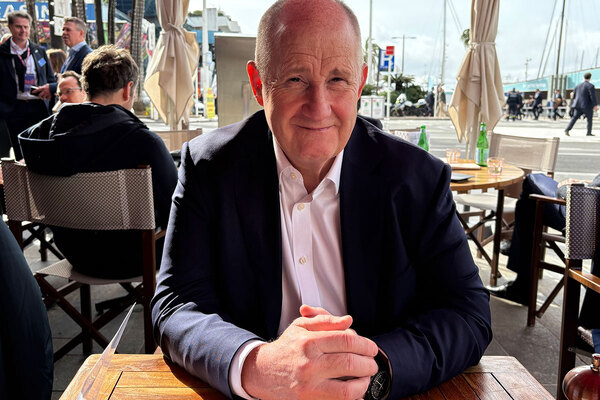What did we learn from the Autumn Budget?
Jules Birch analyses the Autumn Budget, asking to what extent it will keep the government’s promise to deliver “the biggest boost to affordable and social housing for a generation”
A final verdict will have to wait for the Spending Review in the Spring, but how should we assess the first Labour Budget for 14 years?
The answer, of course, depends on what you take as your starting point. Compared with the disastrous first Conservative Budget in 2010 or even the first Labour one in 1997, this one takes some definite steps in the right direction.
But does this Budget live up to Labour rhetoric about greater investment and long-term solutions? To what extent will it really “fix the foundations” and deliver “the biggest boost to affordable and social housing for a generation”?
Here are 10 key areas that I was looking out for:
New social homes
The £500m top-up to the Affordable Homes Programme (AHP) briefed in advance is welcome news, but it must only be a down-payment on a far bigger increase for the next AHP after 2026.
It is at the lower end of expectations of up to £1bn extra and it will not be enough to make up for a shortfall in delivery caused by construction cost inflation and other pressures on social landlords.
The current AHP is on course to deliver between 110,000 and 130,000 affordable homes over five years, rather than the 180,000 originally expected while need is estimated at 90,000 social homes a year. All of which puts the 5,000 the government says will be generated by the top-up into perspective.
Details of “future grant investment” in the next AHP will be set out in the Spending Review and will support a mix of tenures “with a focus on delivering homes for social rent”.
Housing supply
The primary manifesto target is, of course, 1.5 million new homes over the five years of this parliament. The importance of that is signalled by the fact that £500m for affordable housing represents only a small part of a £5bn boost for investment in the Budget.
The largest part of this is £3bn in additional guarantees for small house builders and build-to-rent developers, signalling that the government will continue to support the private as well as the social sector.
However, the Office for Budget Responsibility report published alongside the Budget is sceptical about the chances of hitting the target. It forecasts that housebuilding starts will rise from 100,000 a year to 160,000 by 2029 and that net additional homes (the basis of the target) will total 1.3 million by the end of the forecast period in 2029-30.
While it admits that changes to the National Planning Policy Framework might yet deliver more homes than this, the forecast period is almost a year longer than the five years of this parliament.
Greater investment in affordable housing is the obvious way to bridge the gap.
Rents
A five-year rent settlement at Consumer Price Index plus 1% was also briefed in advance and will go some way to repairing the damage to social landlord finances caused by previous rent reductions and caps.
The new settlement is now out to consultation and the impact on working tenants will be scrutinised as part of that. The consultation says that the government will consider seven and 10-year rent settlements as well as the favoured five-year option.
Whatever the final duration, the government clearly expects the new rent settlement to fund much of the work on improving the existing stock as well as supporting the delivery of new homes.
Right to Buy
A policy paper accompanying the Budget confirms that discounts will be cut to levels before the policy was reinvigorated in 2012.
At regional levels of £16,000 to £38,000 rather than the current £102,400 to £136,400, those are big reductions that should see sales dwindle rapidly. The government will try to avoid a spike in sales to take advantage of the higher discounts by acting quickly.
With the review confirming that the bogus pledge to replace homes sold with new ones has not been met since 2017-18, councils will also be allowed to keep 100% of receipts at a cost to the Treasury estimated at more than £1bn over five years.
Another consultation on wider reforms to protect newly built stock will follow shortly.
However, the problems identified in the policy paper beg the question of why the government has not gone further. Labour may not be ready to abolish the Right to Buy, but why not allow councils to apply to suspend it in areas of high housing stress?
Existing homes
The Budget had two welcome surprises for landlords feeling the pressure from rising costs for building safety, net zero and improving the quality of their existing stock.
“Investment to speed up the remediation of building safety” will rise to over £1bn in 2025-26 (although note the use of “to”, not “by”), including for social landlords.
Further steps on remediation will be set out in the autumn – hopefully alongside measures to broaden contributions from the construction sector. Both will be needed to speed up the pitiful pace of work so far in the private sector.
Meanwhile the government will take “the first step towards a Warm Homes Plan” with £1bn next year and £3.4bn over the next three years for heat decarbonisation and household energy efficiency. Just over half will go to support fuel poverty schemes and the government will also increase funding for the Boiler Upgrade Scheme.
Council housing finances
Changes to the Right to Buy plus a one-year extension of discounted Public Works Loan Board rates for local authorities will certainly help but they do not amount to the long-term reform advocated by councils.
The chancellor resisted calls to look again at the terms of the 2012 settlement on Housing Revenue Account debt despite fundamental changes to their finances since then.
The Treasury also continues to use a definition of public borrowing that discriminates against investment in council housing.
Borrowing rules
Rachel Reeves was able to increase public investment across departments because of a change in the definition of debt within her fiscal rules.
The switch from Public Sector Net Debt to Public Sector Net Financial Liabilities creates space for this by accounting for the value of financial assets created by public spending (such as the student loan book) as well as the costs of it.
However, the chancellor resisted calls to go for a more radical measure (Public Sector Net Worth) that counts the value of non-financial assets (such as housing, roads and hospitals) created as well as costs. The objection that they are difficult to value clearly does not apply to housing.
Homelessness
An extra £233m for councils to tackle homelessness and rough sleeping is welcome news that the government says will take total funding to over £1bn next year.
However, it can only ever be what the government might call a sticking plaster solution to the long-term problem of a lack of social housing.
Local authorities facing bankruptcy because of soaring bills for temporary accommodation will be looking for much more in the Spending Review.
There was no movement on calls for the cap on temporary accommodation funding – frozen since 2011 – to be lifted.
And there was no sign of funding and a target to cut the number of families languishing in temporary homes that have become semi-permanent.
Benefits
Those problems will only be exacerbated by a decision not mentioned in any of the background Budget documents.
Labour inherited spending plans that included a renewed freeze in Local Housing Allowance from April 2025 and has gone along with them.
This despite private rents rising by a record 8.4 per cent in the past 12 months, five times the rate of inflation. The result of rising rents and frozen LHA will inevitably be more rent arrears, evictions and homelessness.
The Budget had some welcome changes to Universal Credit but Labour has ignored calls to increase or abolish the benefit cap or scrap the bedroom tax (a manifesto pledge in 2015, 2017 and 2019) or change the two-child limit.
In that context, £1bn for the Household Support Fund and discretionary housing payments next year will be desperately needed but look like the ultimate in sticking-plaster solutions.
Tax reform
An increase in the higher rate of stamp duty on purchases of second homes is good news in the sense that the Office for Budget Responsibility says it could result in 130,000 extra transactions over the next five years by people buying a first home.
However, it is disappointing to see the government resist calls for more radical reform of property taxation. Done correctly, this could boost tax revenue, make the whole system fairer and make housing more affordable. Instead we have a system that continues to be based on council tax valuations last carried out in the early 1990s.
After the past 14 years, this was a Budget that made some welcome down-payments on Labour’s ambitions for housing. The will is certainly there. We will find out in the spring if it will be matched by the means.
Jules Birch, columnist, Inside Housing
Sign up for our daily newsletter
Already have an account? Click here to manage your newsletters













